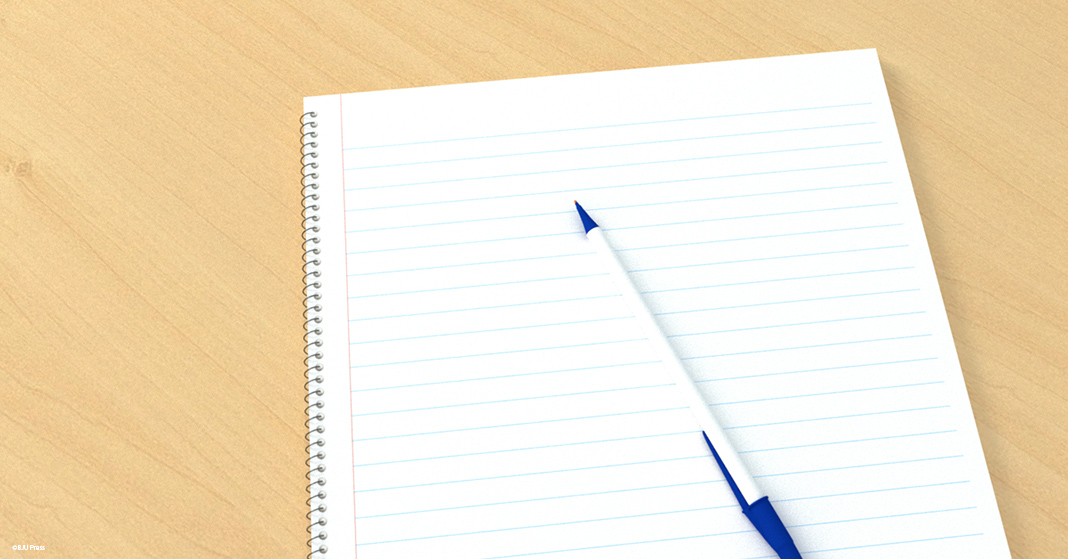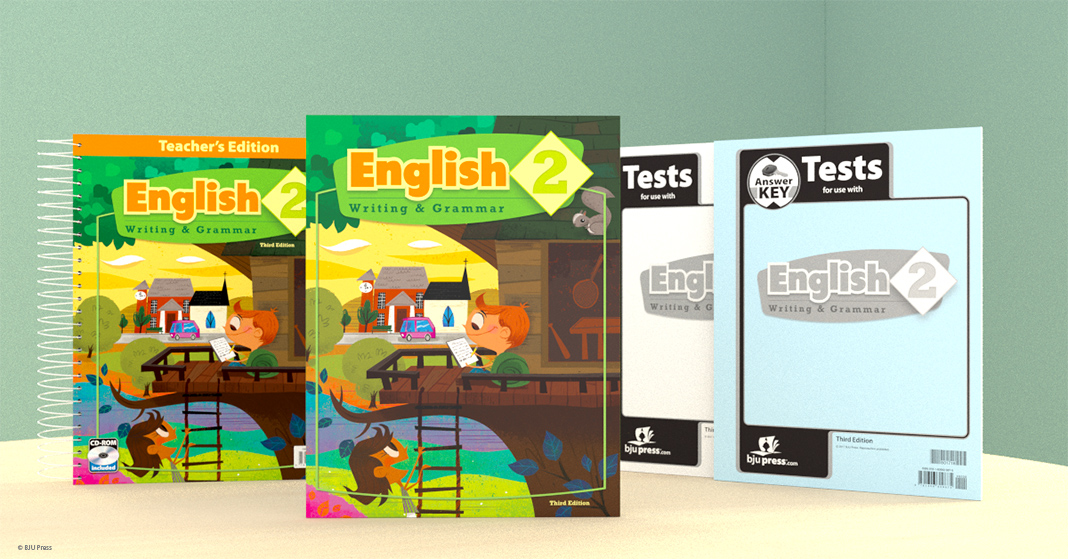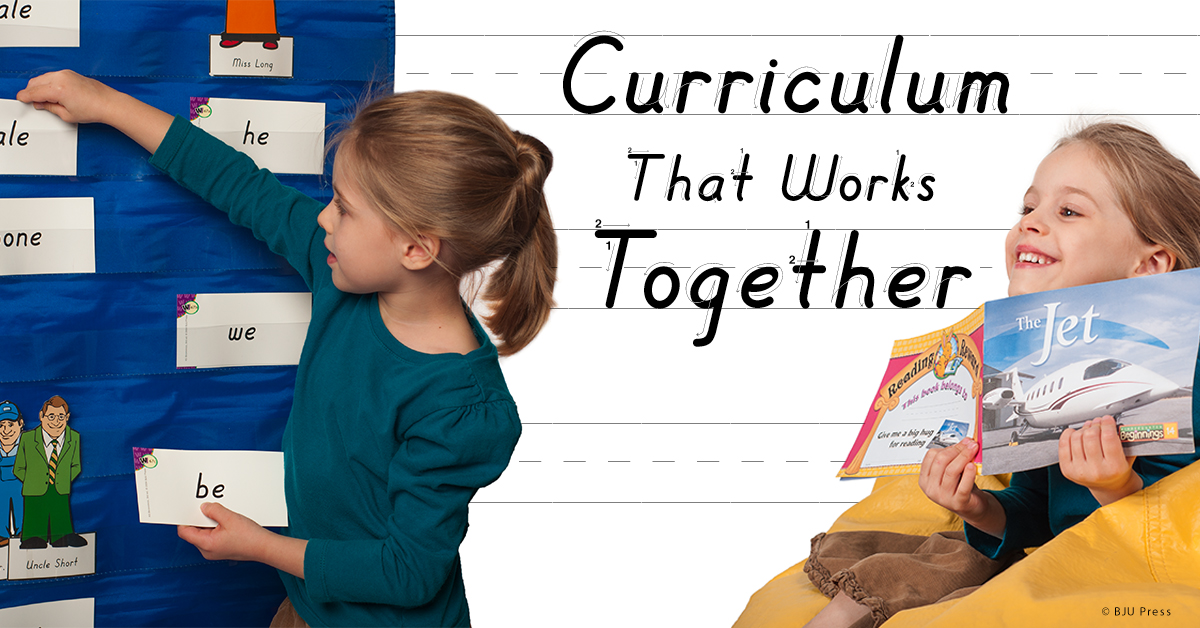
We are excited to introduce our new video courses for 2021! This year we have seven new courses that span from Grades 1–11. Each course is age-appropriate and, above all, is designed to excite a love of learning in your students. For more information about these new courses, see our new 2021 Catalog! [Read more…] about New Homeschool Video Courses
English
6 Ways to Combat the Blank Page
 Your homeschool year is about to get underway again, and with it, exciting new writing assignments. Whether your writer looks forward to learning more about writing or tries to stay as far away from it as he can, there’s one aspect of writing that he will most likely struggle with.
Your homeschool year is about to get underway again, and with it, exciting new writing assignments. Whether your writer looks forward to learning more about writing or tries to stay as far away from it as he can, there’s one aspect of writing that he will most likely struggle with.
The blank page.
Looking at the whiteness of a computer document or the empty lines of a notebook page can be overwhelming, as if the blank page asks “Where do you even start?” How do you teach your writer to overcome his blank pages? Here are some tips for encouraging elementary and secondary students to conquer one of the most daunting phases of a writing assignment.
Elementary Writing Assignments
1. Take dictation.
A young writer often has more to overcome than just the blank page itself. He may get hung up on vocabulary, spelling, punctuation, and even handwriting. You can bypass much of his hesitation by having him explain what he wants to write about and writing his explanation down for him. From there, he can revise what you wrote until it matches the assignment’s requirements.
2. Add a visual goal.
In English 2, the textbook explains how to write a paragraph by laying out the various parts of a paragraph and underlining those parts in different colors—green for the topic sentence, orange for details, and red for the ending. By highlighting blank lines in these colors and having your young writer write in the missing parts, you can give him visual cues and goals to work toward. The different colors break up the blankness into manageable pieces.
3. Use writing prompts.
One of the simplest ways to overcome the blank page is to never let it be completely blank. You can give your writer a prompt to put at the top of his page. The prompt you give can be the first sentence of a story, a topic sentence for a paragraph, or even a question for him to answer. This works the same way as the “Apply and Write” sections in BJU Press elementary English textbooks.
Secondary Writing Assignments
1. Fill in the outline.
Papers for secondary writers often involve writing outlines. Your writer can skip the blank page entirely simply by expanding directly from his outline. Even a simple outline will give him something to work with. Directions for creating outlines may be found in Chapter 13 of Writing and Grammar 10.
2. Keep the thesis at the top.
Almost every secondary paper will involve a thesis of some kind—a thesis gives the writer’s point of view for the paper. Even a simple paragraph essay is often based on one. Instructions for crafting a thesis statement may also be found in Chapter 13 of Writing and Grammar 10. Once your writer has decided on a thesis, have him write it at the top of each page. Keeping it there will help him focus on his purpose as well as eliminate the blank page.
3. Take a walk.
Sometimes, if your writer really gets stuck, getting him away from the accusing stare of the blank page can be the perfect cure. Once his legs fall into the regular rhythm of walking, his mind will be free to come up with the words that will best begin his writing project—provided that he remembers them long enough to write them down.
Other times, overcoming the blank page is a simple matter of putting down words—any words. The words your writer chooses may be changed many times in the drafting process, and that’s OK. Their real function is to get him over that first hurdle so he can write the rest of the paper. The page only stays blank as long as there are no words on it.
English 2: Developing Young Writers

Writing has always been one of my favorite things to do. My mother would transcribe oral stories I retold as a preschooler. (It’s true! You can read about it here.) Then when I was in the elementary grades, we would “publish” a book each year as a compilation of all my homeschool writing projects. I loved sharing my stories, haikus, and book reports with adults. It made me feel important when they would comment on my work.
Now when I learn about a new language arts textbook that teaches children why writing is valuable and shows them how to do it successfully, I get pretty excited! The new edition of English 2 is one such textbook. It brings together both the writing and grammar elements that your child needs to be an effective communicator for God’s glory. Included in the English 2 Subject Kit are the following pieces.
Student Worktext
The strength of this student worktext is in its alternating chapters of grammar and writing instruction. You can read more about how the BJU Press elementary English curriculum builds a solid foundation with this approach. There’s also a strong biblical worldview connection between understanding what God communicates through language and how your child can use this gift to serve God and love others.
It appeals to visual learners with the cheerful colors, consistent icons, and engaging activities that prompt critical thinking. The illustrations are done by some of my favorite in-house artists and capture interest on each page.
The student worktext also provides hands-on learners with writing project examples to use as models and grammar exercise pages to practice new skills.
You can get a more detailed look at the grammar and writing chapters when you watch my English 2 walkthrough video.
Grammar focus: These chapters develop critical thinking skills as new concepts are introduced and applied in exercises. Each chapter follows the same model: learn, apply, and review. Also included are journal pages where your child has the opportunity to do some free writing without the constraints of a specific project and without receiving a grade.
Writing projects: These chapters come in between the grammar ones so that your child is prepared to use correct grammar needed for his projects. We introduce literature links to some published works as real-life examples. The five-step writing process and sample writings provide a framework to follow so that your child knows the step-by-step process for completing his goal—whether it’s a poem, personal narrative, letter, or research report.
Teacher’s Edition
This book takes your child’s learning to another level while simplifying your life at the same time! It shows materials needed for each lesson, provides questions and prompts to engage your child, and gives you all the answers for each student worktext page in one easy-to-find location—right within the reduced student pages for the corresponding lesson. View the teaching resources and Chapter 1 of the English 2 Teacher’s Edition.
Tests and Answer Keys
These two pieces provide the assessments your child takes to gauge his understanding of the concepts being taught as well as the correct answers for you to measure your child’s comprehension. They also offer you suggestions for grading.
Explore all the BJU Press English and Writing & Grammar subject kits on our website.
Our Distance Learning Teachers Have Quite the Character

There wouldn’t be Distance Learning daily video lessons without our teachers. They’re the ones who generate the excitement, script the lessons, and bravely face the camera on recording days. How would you like to do all that? I didn’t think so—me either.
Sometimes because of all the seriousness of recording lessons, you only get to experience one side of these teachers’ multi-faceted personalities. So without further ado, let’s view a “different” side of three of our Distance Learning teachers.
Miss Jessica Ingersoll
As an elementary Distance Learning teacher, Miss Ingersoll enjoys many things, and near the top of the list is being your child’s teacher. Watch “Meet Our New Teacher” for some fun facts about Miss Ingersoll. See what similarities your child can relate to. You can view a sample daily video lesson for her courses at the links below.
Mr. Bill Harmon
As a secondary Distance Learning teacher, Mr. Harmon tackles the subjects your child (and you) might find difficult. His unique approach creates memories your family will never forget. Watch “Experiencing Chemistry with Dry Ice” for a sample of how he conducts scientific experiments on camera. And yes, in case you’re wondering, he’s this crazy off camera too! Take a look for yourself by viewing a sample daily video lesson for each of his courses at the links below.
- Science 6
- Fundamentals of Math (Grade 7)
- Pre-Algebra (Grade 8)
- Algebra 1 (Grade 9)
- Physical Science (Grade 9)
- Chemistry (Grade 11)
Mrs. Debbie Overly & Distance Learning Families
Elementary Distance Learning teacher Mrs. Overly shares a funny anecdote about an early filming experience in “Homeschool Families Share About Distance Learning,” an interview style video from a homeschool convention. You’ll also hear from other homeschool parents and students about their experience with Distance Learning video lessons. Mrs. Overly is well known and loved by her students. She includes many demonstrations and hands-on activities in her daily video lessons to help your child learn. View a sample daily video lesson from each of her courses at the links below.
Your family has the opportunity to meet several different Distance Learning teachers and attend their workshop sessions at homeschool conventions this year. Follow our BJU Press Homeschool Facebook page for announcements about where the teachers will be.
Curriculum That Works Together
It happened for the first time during our second week of homeschooling this fall. After finishing her English lesson, my second-grade daughter pulled out her spelling book to look at the day’s assigned worktext page. “Mom,” she yelled excitedly, “alphabetical order! I just learned this in English. It’s like I’m doing English and spelling at the same time!”
Since we use BJU Press for every subject, this scenario happens a lot. Concepts from one subject frequently appear in another. Sometimes spelling words show up on our handwriting pages. Sometimes the same phonics generalizations highlighted in our weekly spelling list also get reinforced during our reading lessons. Sometimes my daughter gets to practice the capitalization rules she learned in English while she also practices handwriting. The overlapping of these concepts in different subject areas is a good thing—a very good thing, in fact—for the following reasons.

1. Repeating concepts aids comprehension
Most of us have probably heard that “practice makes perfect.” We probably even tell our kids that, especially at times when they’re struggling with a difficult skill. Repeating a task over and over usually does help people become more proficient at it. Good educators use this same idea in their teaching or writing (a method called “spiraling”). With this approach, concepts are repeated several times in different ways and in various contexts. Each time, the child understands the concept a little better.
2. Encountering concepts in multiple subjects encourages real-life application
Ultimately, we want our children to use what they’re learning in our homeschool environment in everyday life, especially in service to the Lord. We want them to be able to proofread a church bulletin, write a legible and error-free thank-you note, and research and evaluate information. When our children are exposed to the same concepts in different subject areas, they’re more likely to understand the broad application of that knowledge. No longer will capitalization rules only apply to English worksheets—as your child practices those rules in spelling, handwriting, and reading, he or she will likely get them right when writing a personal letter to a grandparent.
3. Reviewing concepts saves time
The overlap of concepts throughout a curriculum also has a big benefit for homeschool moms everywhere. It saves time. I get excited when I look at a lesson and realize that we’ve already covered a concept elsewhere. I don’t have to re-teach it. I just review it and move on, saving precious time in our homeschool day.
Watch this video to see the curriculum we’re using in our homeschool.